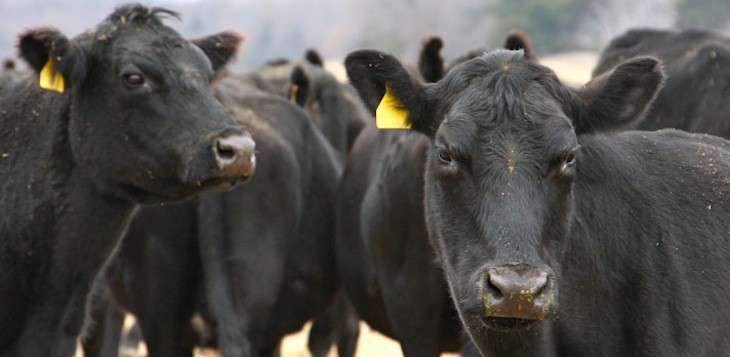Winter storms to impact cattle and meat industries for near term
by December 2, 2019 2:25 pm 477 views

Winter storm weather that disrupted Thanksgiving travel is likely to have a variety of impacts on the meat industry for several more weeks, according to Derrell Peel, livestock marketing analyst with Oklahoma State University Extension.
Peel said heavy snow and frigid temps hinder an already difficult crop harvest. He said deep snow in some areas will add delays to corn harvest and also likely reduce crop quality. On Nov. 25, 84% of corn harvest was completed, well behind the average of 96% for the date. He said corn harvest was 68% complete in South Dakota, 57% in Wisconsin, 56% in Michigan and just 30% in North Dakota. He said many of those areas were hit by significant snow and blizzard conditions in the recent storm.
Peel said extreme winter weather can reduce cattle production and increase costs for ranches and feedlots.
“Severe weather inevitably means management challenges and higher costs for producers but may also have market impacts if poor conditions are widespread enough,” Peel wrote in a new report. “The current blast of winter weather impacts a wide swath of cattle feedlots from Colorado, across parts of Nebraska and the Dakotas, part of Iowa and across Minnesota.”
Luckily, he wrote, it appears the major cattle feeding areas in Kansas and Texas missed the bulk of the storm.
“While this storm may not be widespread enough to cause noticeable fed cattle market reactions, the storm may delay cattle finishing and disrupt slaughter flows in some regions and may help ensure that the seasonal peak is in for carcass weights,” Peel wrote.
Steer and heifer carcass weights have pushed above year-ago levels the past few weeks, Peel reported. The latest steer carcass weights are at 912 pounds, compared to 900 pounds last year, and heifer carcasses are at 841 pounds, up from 836 pounds one year ago on the same date. However, for the year to date, steer carcass weights are down 3.3 pounds and heifer carcasses are down 4.4 pounds. An early storm like this may set the stage for a long period of feedlot production challenges with impacts persisting and accumulating through the winter, Peel added.
On the demand side of the market, Peel said winter storms may disrupt transportation and the flow of perishable products to markets. While people continue to eat during storms, travel and business disruptions often reduce restaurant traffic and power disruptions may also reduce meat demand from consumers.
For cattle and beef markets, Peel said winter weather may have negative impacts on both supply and demand depending on the location, severity and size of storm events. The net impact is uncertain and is often difficult to isolate in aggregate market prices. However, higher costs, lost production and reduced revenues impact the entire industry from cattle producers to beef retailers.
